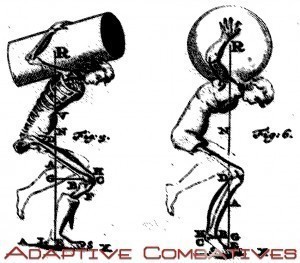Friends,
How does one properly teach a technique? This is one of the primary questions we work to answer in Pramek’s CLM: https://pramek.com/new/shop/default/reading/clmbundle
In Pramek’s EPL, we look at martial art learning from a different point of view. The majority of martial art traditions are taught based on Procedural Learning, which is teaching a technique to a student. This technique is then repeated over and over, and tested through sparring. In Pramek, we looked at what we call Efficient Perceptual Learning, which is a method of teaching the concept behind a technique. This learning method has five stages, and in these series of articles we will share with you the basics of each to supplement your current teaching methods.
What is the goal of a technique? Is it the technique? Or is it the purpose of the technique?
Many times in martial art training, the repetition of the technique becomes the purpose of the technique, instead of what the technique accomplishes. This often happens when student are first learning. They focus so much on form they forget function and begin to rely on unrealistic methods. The goal of attention weighting is to show the student two things: the general way of accomplishing the technique properly, and then focusing on the goal of the technique.
1. Show the technique objectively as perfect as possible. Think about how it would be done perfectly, without your own nuisances. The text book way of doing the technique – then show it this way. Your body type is different than your students, so by showing it the text book way, you enable any student to accomplish it. You don’t want to show a 110 pound woman a technique that you have perfected as a 210 pound man. Weight your attention without bias.
2. Focus the attention on the goal of the technique first, the perfection second. You’ve taught it – now what? Focus your student’s attention on the goal of the technique. Look at the anatomy, the targeting. Move your students toward why they are doing it. You’ve taught it text book, now make sure they begin to perform it for it’s purpose, to defend themselves, not to just do it to pass a test. Teach the anatomy, the mechanics of achieving the goal of the technique. With this you have a student doing it perfectly for the purpose it was designed for.
3. Weight the attention on the concepts behind the technique – this will enhance the goal. A concept is different than a goal or the text book usage. Look at the the movement mechanics, where the body movement is and how it’s accomplished. As we say, ‘toes to the nose’ look at every movement to work on the concept behind the technique. Now you can work on the movement and making sure they move efficiently and utilize their movement and placement as perfectly as possible. Now you have a student who knows it text book, understands it’s goals, and is moving the proper way to achieve both.
4. Correct 1-3 stringently on the main points to weight attention. Your student is performing the text book technique perfectly – they know the basic, the know the goal of it, and they know the movement. Now, you must enforce 1-3. Have them do each in steps – work on 1, then 2, then 3. Correct on each and do not let the students stray, as they are weighting attention on making the technique perfect.
5. Test the form, but not the usage, of the technique. At this point, put 1 – 3 together. Have the students test their knowledge of 1 – 3. Are they performing the text book technique the way you showed it? Ask their targeting and why are they doing it? What is the goal? Ask why they are moving the way they are…and correct their movement. This will test them as a student and you as a teacher. You must not stray from the text book in your correction of the technique, your knowledge of the goal of the technique, and the movement mechanics.
You may ask why not test in sparring? Because of the 110 pound woman or the 150 pound man in a class of 200 pound men. In the next phase of the EPL, every student will make the technique their own in what we call ‘imprinting,’ where the students will make the technique their own and focus where they can – each student will focus in different areas – form, goal, movement – but now they have a basis with which to work from that is text book.
Want to learn more on how to teach from the point of view of educational science and conceptual learning?
Check out our manuals, The Conceptual Learning Method, a Pramek original method, at https://pramek.com/new/shop/default/reading/clmbundle

